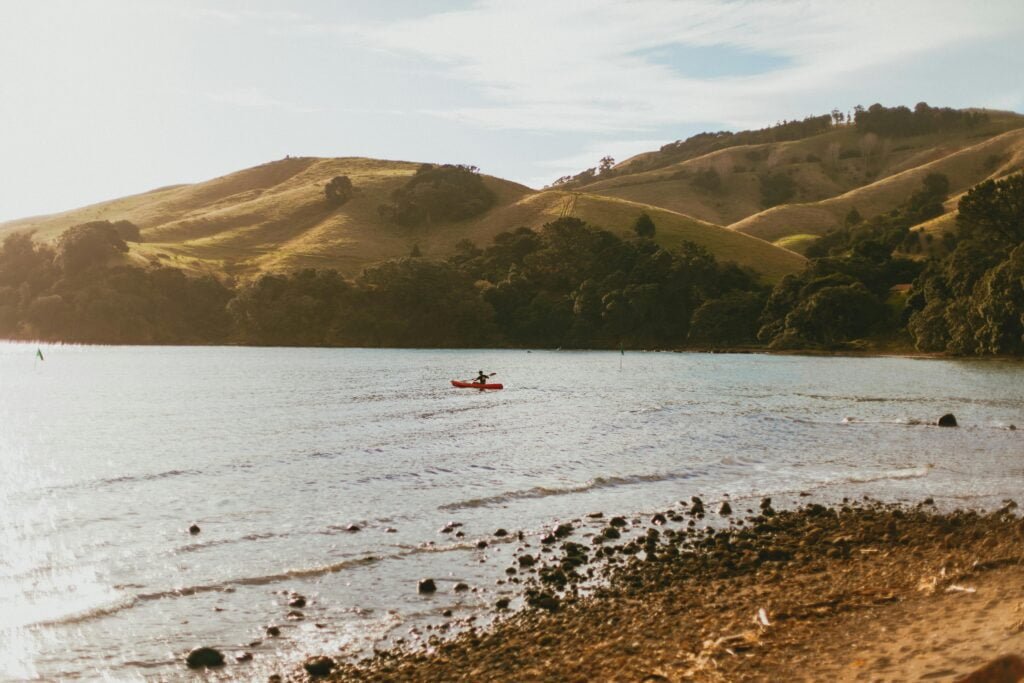Have you ever wondered what makes Aruba a unique travel destination? This article provides a comprehensive overview, essential tips, and detailed insights that anyone planning to visit Aruba should know.
Table of Contents
Overview
Aruba, a constituent country of the Kingdom of the Netherlands, is renowned for its white-sand beaches, vibrant culture, and year-round sunny weather. Situated in the southern Caribbean Sea, it boasts a steady influx of tourists drawn by its natural beauty and recreational opportunities. In this article, you’ll find critical information about traveling to Aruba, ensuring your trip is both enjoyable and seamless.
Thesis Statement
Understanding what you need to know when traveling to Aruba is crucial for making the most of your vacation and navigating the island effectively. From historical context to current trends, this piece aims to equip you with essential knowledge, ensuring you have a well-rounded and enjoyable experience in Aruba.
Historical Context
Aruba has a rich history marked by various influences. Originally inhabited by the Arawak Indians, it was later claimed by the Spanish in the 15th century and then by the Dutch in the 17th century. This diverse historical patchwork has left a lasting imprint on Aruba’s culture, architecture, and societal norms.
The Spanish and Dutch Influence
The Spanish era introduced European customs and Christianity to the island. However, the Dutch epoch, which started in 1636, has had the most enduring impact, influencing the island’s governance, language, and architecture. Presently, Dutch and Papiamento (a Portuguese Creole) are both widely spoken in Aruba.
Current Trends
Aruba has embraced sustainable tourism as a core aspect of its development strategy. The island aims to balance economic growth with environmental conservation, making it a prime example of how tourism and sustainability can coexist.
Growing Emphasis on Sustainability
Aruba has received accolades for its efforts in promoting eco-friendly tourism. Initiatives like the aloe-based skincare products, locally-sourced culinary dishes, and renewable energy projects illustrate its commitment to green practices. These initiatives not only attract tourists but also preserve Aruba’s natural beauty for future generations.

This image is property of images.pexels.com.
Key Concepts and Definitions
Papiamento
Papiamento is a Creole language spoken in Aruba, Bonaire, and Curaçao. It combines elements of Spanish, Portuguese, Dutch, and African languages. Understanding basic phrases can significantly enhance your stay and foster better connections with locals.
Balashi Beer
Balashi Beer is the island’s local brew, proudly crafted using desalinated water and imported hops. Sampling this beer is a rite of passage for many visitors, providing a refreshing taste that embodies the island spirit.
Essential Travel Tips
Travel Documents and Entry Requirements
U.S. citizens need a valid passport to enter Aruba. No visa is required for stays up to 90 days. Ensure your passport is valid for the duration of your trip to avoid any issues at customs.
Health and Safety
Aruba is generally considered safe, with a low crime rate compared to other Caribbean destinations. However, it is vital to exercise regular travel precautions—avoid unlit areas at night and keep your belongings secure.
Currency and Expenses
The Aruban Florin (AWG) is the local currency, but U.S. dollars are widely accepted. Major credit cards are also readily used across the island. Compared to other Caribbean islands, Aruba is moderately priced, with expenses varying based on your lifestyle and preferences.
Climate and Best Time to Visit
Aruba enjoys a tropical climate, with little seasonal variation. Temperatures hover around 82°F (28°C) year-round. The best time to visit is from April to August, after the peak tourist season and before the hurricane season, which runs from June to November.
Transportation
Renting a car is the most convenient way to explore Aruba, especially if you plan to visit areas outside of the main tourist hubs. Alternatively, taxis and buses are reliable options for getting around. Keep in mind that driving is on the right-hand side of the road.

This image is property of images.pexels.com.
Cultural Etiquette and Local Practices
Respectful Behavior
Arubans are known for their warm hospitality. When greeting someone, a handshake is customary. It is also considered polite to address people formally unless invited to do otherwise.
Cuisine
Aruban cuisine is a delightful blend of various cultural influences. Dishes like Keshi Yena (stuffed cheese) and Pastechi (savory pastry) are must-tries. Always show appreciation for the local cuisine and try to dine at locally-owned establishments to support the community.
Activities and Attractions
Beaches
The beaches in Aruba are among the finest in the Caribbean. Eagle Beach and Palm Beach are the most popular, offering a range of water sports, sunbathing spots, and beach bars. For a quieter experience, Baby Beach in San Nicolas is a serene getaway.
Natural Wonders
Arikok National Park, covering nearly 20% of the island, is a treasure trove of natural beauty. Visitors can explore caves, unique rock formations, and indigenous flora and fauna. Don’t miss the Natural Pool (Conchi), a secluded swimming spot surrounded by rugged terrain.
Adventure Activities
For thrill-seekers, Aruba offers various adventures such as windsurfing, kiteboarding, and off-road jeep tours. The island’s consistent trade winds make it an excellent destination for wind-based sports. Snorkeling and scuba diving are also popular, with colorful coral reefs and shipwrecks to explore.

Compare Different Points of View
Beach vs. Cultural Tourism
While Aruba’s beaches are its most celebrated attractions, cultural tourism is gaining traction. Comparing the two experiences, beaches offer relaxation and recreational activities, whereas cultural exploration provides a deeper understanding of the island’s heritage.
Tourism vs. Sustainability
As tourism continues to be the backbone of Aruba’s economy, sustainability efforts must keep pace to ensure long-term viability. On one hand, tourism brings economic gains and cultural exchange. On the other hand, unchecked tourism can lead to environmental degradation. Aruba strives to balance these competing interests through various eco-friendly initiatives.
Table: Comparison of Beach and Cultural Tourism
| Aspects | Beach Tourism | Cultural Tourism |
|---|---|---|
| Activities | Water sports, Sunbathing | Museum visits, Historical tours |
| Main Attractions | Eagle Beach, Palm Beach | National Archeological Museum, Alta Vista Chapel |
| Typical Audience | Families, Couples, Young adults | History enthusiasts, Culture lovers |
| Economic Impact | High due to popularity | Growing due to increasing interest |
| Environmental Concerns | Overcrowding, Pollution | Preservation of historical sites |
Impact Assessment
Analyzing the impact of tourism on Aruba reveals both positive and negative consequences. Ethically managed tourism has bolstered the economy, provided jobs, and improved local infrastructure. However, it has also placed pressure on natural resources and led to occasional instances of environmental harm.
Environmental Impact
Efforts to promote sustainable tourism have mitigated some adverse effects. Initiatives like beach clean-ups, coral reef protection projects, and eco-friendly resorts exemplify Aruba’s commitment to environmental stewardship.
Social Impact
Culturally, tourism has brought global awareness to Aruban traditions and lifestyles. It has fostered cultural exchange and preserved local heritage through museums, festivals, and community events. However, the influx of tourists can also strain local resources and influence cultural homogenization.

Future Directions and Implications
Predictions
In the coming years, Aruba is expected to further enhance its sustainable tourism initiatives. The island aims to become more eco-friendly through renewable energy projects and stricter environmental regulations. Additionally, the rise of digital nomadism may see Aruba marketing itself as a remote work destination.
Implications for Tourists
For tourists, this will mean more responsible travel options and enriched cultural experiences. Future travelers may find themselves more engaged with the local community, participating in eco-tourism activities and contributing to the island’s sustainability goals.
Implications for Aruba
For Aruba, continued investment in sustainable tourism will preserve its natural beauty and cultural integrity, ensuring it remains a sought-after destination. The island’s ability to adapt to changing tourism trends will dictate its success in maintaining a balance between economic growth and environmental preservation.
Conclusion
Summarise
To summarise, understanding what you need to know when traveling to Aruba ensures a fulfilling and hassle-free visit. From historical context to current trends, essential travel tips, and cultural etiquette, the island offers a rich and diversified experience that caters to various interests. Aruba’s commitment to sustainable tourism also amplifies its appeal, promising travelers responsible and memorable adventures.
Final Thoughts
What aspect of Aruba intrigues you the most? Whether it’s the pristine beaches, vibrant culture, or commitment to sustainability, Aruba offers something for every traveler. Thinking about these facets will enrich your travel experience and deepen your appreciation for this unique island.
Engage
Stay informed about Aruba and other travel destinations by exploring more of our resources. Your next adventure awaits, and we’re here to help you make the most of it.
Credible sources:
- National Archeological Museum Aruba
- Aruba Tourism Authority
- The New York Times Travel Section
- National Park Arikok Official Site
- Sustainable Travel International – Aruba Initiative
12 Things You Should Know Before Traveling to Aruba
How Do I Choose The Right Type Of Accommodation For My Travel Style?
